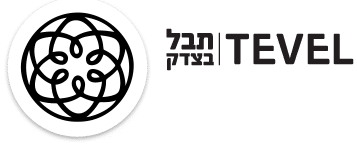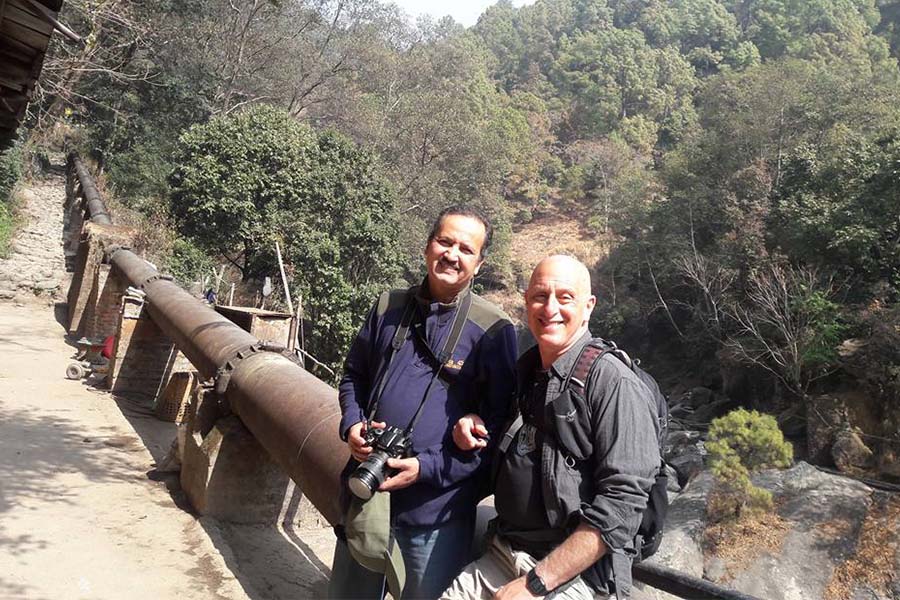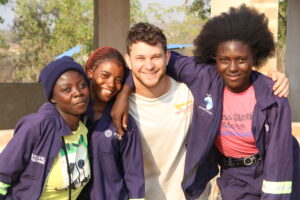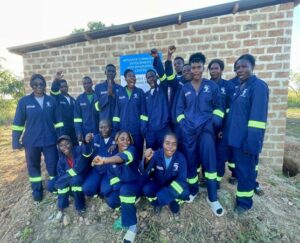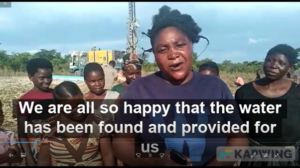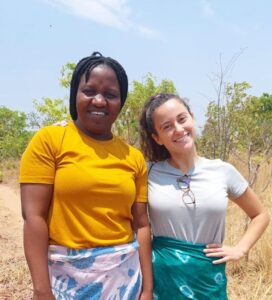By David Dunetz
I was not completely ready for what I saw coming out from Kathmandu airport a month ago – a mayhem of motorbikes, jeeps, and taxis going every which way on unpaved roads churning up a dust bowl. It was a cold evening in early February, which creates the dusty envelope of smoggy cold air that sinks down and settles in with nowhere to go from within the Kathmandu Valley basin as the blue sky disappears for several weeks.
It was time first time I ever felt the need to don a mask, so common in many Asian traffic-filled metropolis.
As could be expected in a place which has grown from a small hamlet to a city of five million residents in just 30 years, migrants, young people, and families leaving their villages in the hopes of better opportunities. Kathmandu’s resources and infrastructure are stretched beyond compare (almost all water is trucked in from outside the valley), still recovering from the 2015 earthquake that wreaked havoc. Nepal is in a frenzy to catch up – with construction going on everywhere- houses, roads, you name it. A global scenario that is repeated in so many places.
But as I was to discover, the smokescreen of dust and rubble belies a much more rich and nuanced story than first meets the eye.
Coming out to Nepal has simmered for a very long time in the back of my mind. In planning my Sabbatical leave from the Heschel Center last summer, I was looking for ways to expand my own learning horizons. My work in environmental education and sustainability over the past 20 years in Israel has always woven in themes of social justice and the globalization. I wanted to share some of this knowledge and experience firsthand and also see how it all plays out on the ground in the developing world. I went to meet Micha to explore the idea of coming to volunteer at Tevel b’Tzedek. He didn’t hesitate- “come”, Micha quipped, and that was it. I was going.
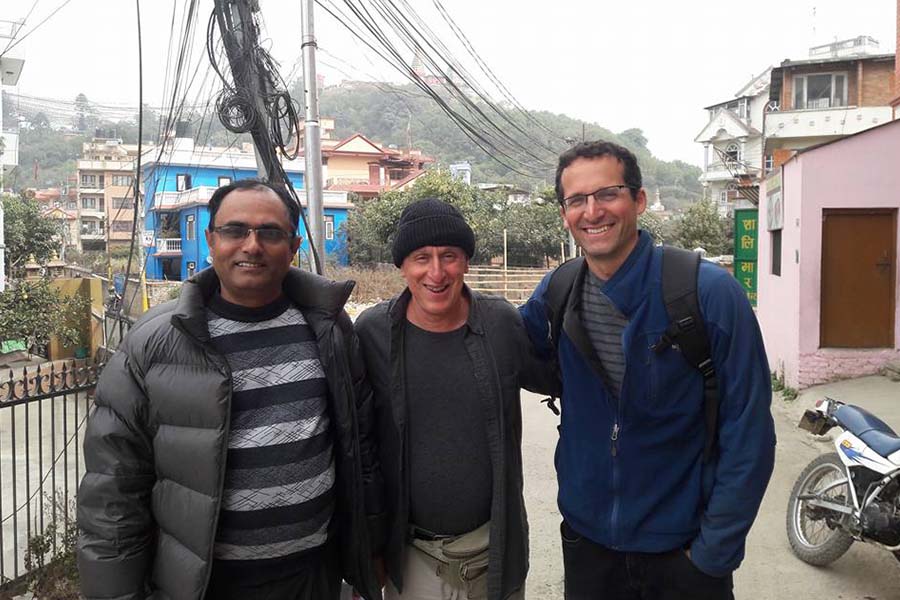
Looking back on the past month, I’m not sure who gained more from my visit. I have learned so much about how core themes and values of sustainability, that I have talked and taught about for so long, are put into practice in a meaningful way in Tevel’s work: resilience, inclusiveness, collaboration, and community. And, no less, from the many conversations and visits- about the huge burdens and huge challenges facing a country trying to keep up in a hyper-globalized modern world. It was like a textbook case of globalization and climate change coming alive. As in this piece quoted from a World Resources Institute Report on Nepal:
“The problems of today, such as drought, forest fires, and flooding, will only be magnified by climate change. In Nepal, changes in monsoon patterns will greatly exacerbate the situation of the unacceptable presence of poverty and inequalities of opportunities in the country. While many Nepalese people are coping autonomously to current stresses, the state must design and implement effective strategies to adapt to climate change impact to achieve economic and social progress. Adapting to long and short-term climate-related problems need creative engagement among government, market actors and the civic movement.”
It was both eye-opening and jaw-dropping the whole way to see how palpable and immediate these issues are part and parcel of the day to day challenges which Tevel works to address. On a trip out to the project in the village of Dahu in the Bethan sub-district, this was brought home ever so clearly. Ten years ago there was sufficient water for crops. Now, all that has changed. Streams and pools have dried out. Rice paddy terraces once fed by rainwater have been abandoned. As have many villagers either left the village or moved closer to the river. In a session with Tevel Fellows, many remarked pani- water is a recurring concern in all the women’s’ group and farmers’ collective they work with. Village women report that they have to now spend a significant portion of their day fetching water on foot from afar. It was heart-wrenching to see young children carrying jugs to help their parents before school began in the morning.
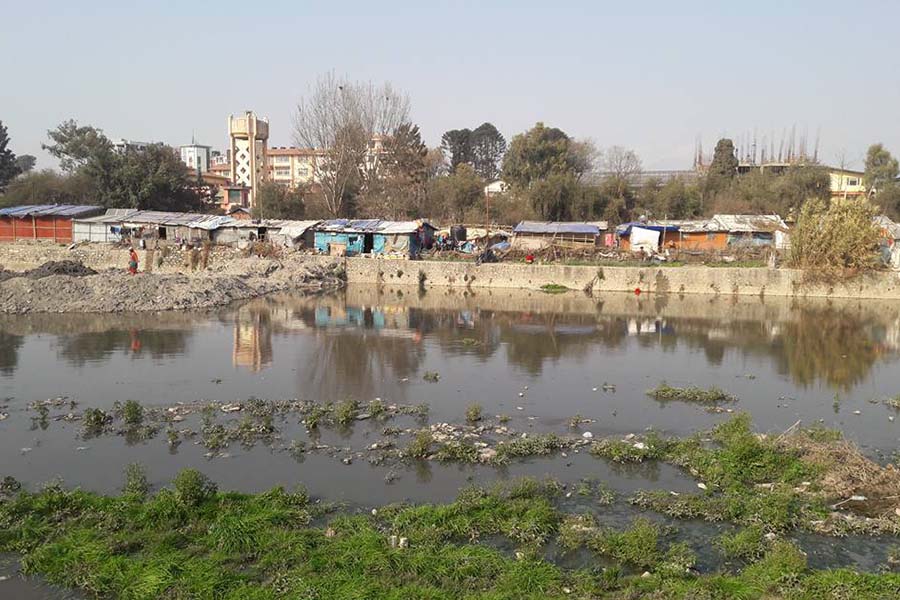
I was told time and again by villagers we met that the earthquake exacerbated the problem- nearly completely stopping up springs that were flowing ever so generously before.
As I painfully learned on the riverside walk up to the source of the Bagmati and then downstream with Bishnu and Dr. Udaib, it is tough to come to terms with how such a holy river, that is a major waterway of the city, has turned into a murky cesspool.
Tevel and its Nepali partner, Nyayik Sansar, are certainly doing heroic work to help people adapt- water catchment projects, introducing water saving sustainable agricultural practices and finding low- water alternatives for livelihood such as beekeeping. Sustainability as the interface of society, economy, and nature was as clear and palpable as I had ever seen it- it was about sustaining life itself.
As the passage above clearly says, these sort of problems will get worse and certainly need the “creative engagement” of all actors to solve a systemic problem, but will also require economic funding. It will need long-term planning as well as short-term solutions. This will be a challenge in a country that ranks only 144 in the global HDI (human development index) that ranks social economic and ecological indicators, where as much as 20% of its workforce goes abroad sending home remittances from laborer and service jobs in the Gulf countries or Israel… And thus fewer working hands remain to grow food in the village.
And not just in outlying villages. The problems are systemic- flight from villages continue to overextend the reception capacity of cities. A walk with Sultana from Nyayik Sansar through the Kalimati neighborhood of Kathmandu brought this home. A slum area of squatters, mostly migrants, who found themselves eking out a living on the banks of the toxic waste of the Bagmati.
And then, a ray of light. Sultana turns in to show me a school where they have worked with migrant kids who send almost all students on to college and further education. And then we go to the Day Care community project set up to offer a good head start to kids in this impoverished neighborhood. Happy, well cared for kids in a stimulating, caring environment with a dedicated staff who told me about their work with parents, youth, schools and community building. To use the jargon of development, this is a holistic, multi-tiered strategic intervention; or to put it more simply- action with a lot of heart.
Meg Wheatley once said, “there is no problem that community is not the answer for.”
I think that is what Tevel/Nyayik Sansar is proving all the time.
Though they are essential solutions to climate and socio-environmental problems are not strictly about technological fixes and money alone. First and foremost- they require trust and long-term connections. Trust and community are the warp and woof of the tapestry of human relationships that can spawn innovation, mutual help, and preparedness to take up solutions relevant to the local needs.
This is the very bedrock of the kind of adaptation and resilience that will be so necessary into an uncertain future, and I witnessed this clearly on the faces and in the interactions with staff, participants, and beneficiaries of the various projects that the organization leads.
I was privileged to see the community that Tevel and Nyayik Sansar weaves together to do the work- among volunteers from all over the world and local staff.
Like for example at the Friday evening Shabbat dinner I was invited to last week. Nepalis, Israelis, and Jews from around the world sitting around the table together joyfully bellowing out the songs of “shalom aleichem” with challah and kiddush to boot. And then more songs of various cultures and traditions as we feasted on the scrumptious meal they had cooked together.
In these days, when some would prefer to build walls and divide peoples this is a place with a different message altogether- friendship and community- across geographic and cultural boundaries. Strong stuff. It’s also hard work, to be sure. But they are showing it can be done and even work wonders.
As I wrote, I came out to intent on contributing and teaching about my work in sustainability, education, climate and the like. I came away, no less, feeling what a rich learning journey and learning experience this had been for me. Nepal has been a good teacher and warm host. As have been my friends at Tevel B’Tzedek and Nyayik Sansar.
Danyabad, Toda Rabba!!
David
